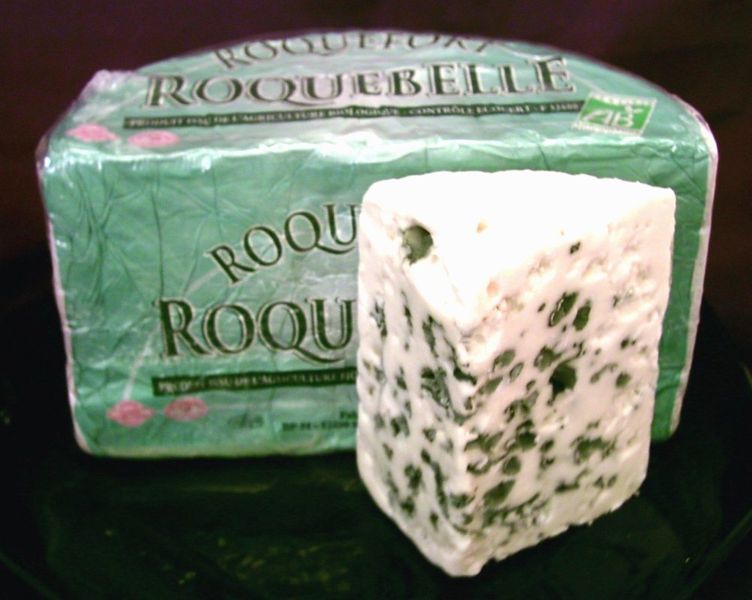Penicillium roqueforti
| Penicillium roqueforti | ||||||||||||||
|---|---|---|---|---|---|---|---|---|---|---|---|---|---|---|
 Roquefort cheese, with blue P. roqueforti veins
| ||||||||||||||
| Scientific classification | ||||||||||||||
| ||||||||||||||
| Binomial name | ||||||||||||||
| Penicillium roqueforti |
Penicillium roqueforti is a common saprotrophic fungus, that is widespread in nature and can be isolated from soil, decaying organic substances and plant parts. The major industrial use of this fungus is the production of blue cheeses, flavoring agents, antifungals, polysaccharides, proteases and other enzymes.
While the fungus has been a constituent of Roquefort, Stilton and other blue cheeses and eaten by humans since about 500 AD, there is considerable evidence to indicate that most strains are capable of producing harmful secondary metabolites (alkaloids and other mycotoxins) under certain growth conditions (Peabody, 1985; Sharpell, 1985).
The chief industrial use of the fungus P. roqueforti is the production of Roquefort cheese. Strains of the microorganism are also used to produce compounds that can be employed as antibiotics, flavors and fragrances (Sharpell, 1985), uses not regulated under the Toxic Substance Control Act (TSCA). Its texture is chitinous.
The organism can also be used for the production of proteases and speciality chemicals, such as methyl ketones (Larroche et al, 1989) and 2-heptanone (Larroche and Gros, 1989; Jong and Gantt, 1987). Other strains of Penicillium species are also useful in biodeterioration (Peberdy, 1985) which may be used in applications subject to TSCA reporting.
References
- This article is based on text originally from a report of the United States Environmental Protection Agency.